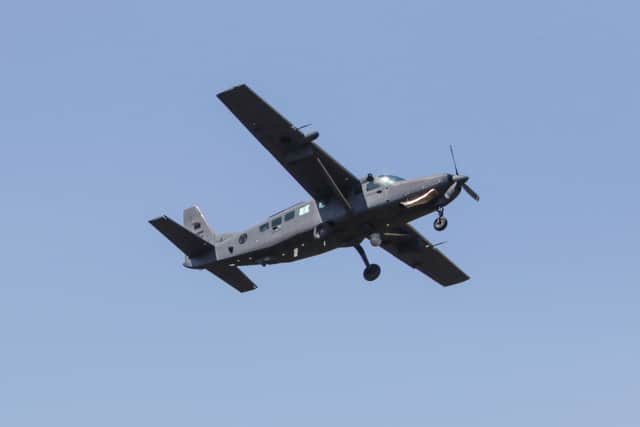Cessna 551: what happened to private plane and why did it crash into the Baltic Sea off the coast of Latvia?
and live on Freeview channel 276
The incident, which occured on Sunday (September 4) saw the private plane crash into the Baltic Sea after an erratic flight travelling from Spain.
Advertisement
Hide AdAdvertisement
Hide AdThe exact cause of the crash is unknown, with the whereabouts of those onboard still unaccounted for.
According to the Swedish Maritime Administration, when German and Danish war planes went to inspect the aircraft they “could not see anyone in the cockpit”.
Here’s everything you need to know about what happened to the private plane and those onboard.


What happened to the Cessna 551 aircraft?
The private plane had taken off from Jerez in southern Spain at 12:56pm with its final destination being Cologne.
Advertisement
Hide AdAdvertisement
Hide AdAccording to FlightRadar24 the jet started to fly north, turning twice at Paris and Cologne, before heading over the Baltic Sea, passing the Swedish island of Gotland.
At 5:37pm, the plane was recorded as rapidly losing speed and altitude, before it crashed in the Baltic Sea off the coast of Latvia.
A spokesperson for Sweden’s rescue service said: “We’ve learned that the plane has crashed (in the ocean) north-west of the town of Ventspils in Latvia.”
Adding: “It has disappeared from the radar.”
FlightRadar24 shared the plane’s final movements on Twitter, in their caption they said they had “stopped receiving signals from the aircraft.”
Advertisement
Hide AdAdvertisement
Hide AdIn their latest update about the plane they said that: “Swedish authorities are currently enroute to the area of last received position.”
German newspaper Bild reported that after take-off the plane had reported a problem with the cabin pressure and that contact was lost outside the Iberian Peninsula.
Lars Antonsson, Sweden’s search and rescue operation leader, told AFP news that the plane had “ran out of fuel”.
He said there was “no explanation at all” about what had happened, adding “they [the people on board] were clearly incapacitated.”
Advertisement
Hide AdAdvertisement
Hide AdThe passengers onboard the plane have still yet to be found.
What has the rescue team said?
The plane entered the airspace of a few countries, with each offering a response, all of which was ignored by the pilot.
Both Germany and Denmark sent warplanes up to inspect the plane, but could not establish contact.
Johan Wahlstrom of the Swedish Maritime Administration said: “They could not see anyone in the cockpit.”
Advertisement
Hide AdAdvertisement
Hide AdAfter news broke that the aircraft had crashed, Lithuania sent an air force helicopter to the crash site to look for survivors, whilst Latvia sent its navy.
Liva Veita, spokesperson of the Latvian Navy said: “Our ships are on the way to the position where the plane crash happened.”
Veita confirmed that there was still no sign of the four people who had been onboard the private plane.
In a statement, the Latvian Civil Aviation Authority said: “The aircraft was flying from Spain to Cologne, but during the flight the aircraft changed its flight route.”
Advertisement
Hide AdAdvertisement
Hide AdAdding: “Air traffic controllers were unable to communicate with the aircraft’s crew”.
Who was onboard the private plane?
According to Bild, there were four people onboard the Cessna 551 aircraft.
This included the pilot, and a family made up of a man, a woman and their daughter.
The aircraft is owned by an Austrian company called Cologne-registered GG Rent, who have yet to give a comment on the incident.
Comment Guidelines
National World encourages reader discussion on our stories. User feedback, insights and back-and-forth exchanges add a rich layer of context to reporting. Please review our Community Guidelines before commenting.
